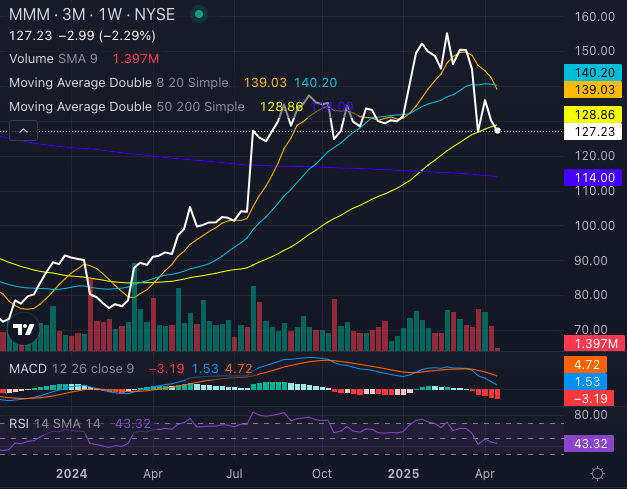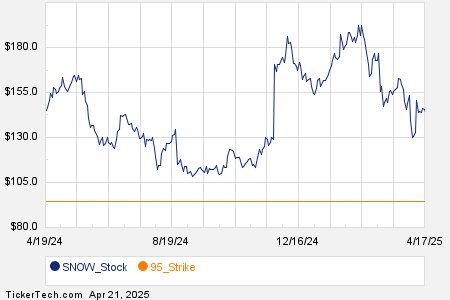Coffee Markets Droop Amid Increased Supplies and Global Concerns
On Monday, May arabica coffee (KCK25) closed down by -8.70 (-2.32%), while trading for May ICE robusta coffee (RMK25) remained suspended due to the Easter Monday holiday in London.
Arabica coffee prices fell on Monday, primarily driven by a sell-off in equity markets that triggered risk-off sentiment across asset classes, further weighing on commodity prices including coffee. Current coffee supplies are also negatively impacting prices, as ICE-monitored arabica inventories reached a 5-week high of 801,549 bags, while robusta inventories climbed to a 1-week high of 4,272 lots as of last Thursday.
The ongoing global trade turmoil is intensifying pressure on most commodity prices, including coffee. There are growing concerns that coffee demand might decline due to increased tariffs that raise coffee prices for U.S. consumers.
Despite this, coffee prices had a rally last week. Arabica coffee reached a 2-week high on Thursday, and robusta coffee hit a 3-week high on Wednesday. Drought conditions in Brazil could adversely affect yields, supporting prices; Somar Meteorologia reported last Monday that the Minas Gerais region, Brazil’s leading arabica coffee area, received only 17.9 mm of rain in the week ending April 12—just 89% of the historical average.
Supply Concerns Support Coffee Prices
Supply fears are providing some support for coffee prices. On April 9, Cecafe reported that Brazil’s green coffee exports in March fell by -26% year-over-year to 2.95 million bags. Furthermore, Brazil’s government crop forecasting agency, Conab, projected a -4.4% year-over-year decrease in the 2025/26 coffee crop, estimating it will decline to a 3-year low of 51.81 million bags. Conab also reduced its 2024 Brazil coffee crop estimate by -1.1% to 54.2 million bags, down from a previous estimate of 54.8 million bags.
Additionally, the Brazilian cooperative Cooxupe stated that high temperatures and below-normal rainfall last month would negatively impact this year’s coffee yields. As the world’s largest arabica coffee producer, Brazil’s crop is particularly sensitive to these adverse weather conditions.
Global Production and Trade Forecasts
On the downside, Marex Solutions warned on March 7 that they foresee the global coffee surplus for the 2025/26 season increasing to 1.2 million bags, up from a surplus of +200,000 bags in the preceding season.
Increased global production poses a bearish outlook for robusta coffee. Marex Solutions predicts that Vietnam’s robusta production for the 2025/26 season will reach 28.8 million bags, marking a +7.9% year-over-year increase, while Brazil’s robusta output is anticipated to rise +13.6% year-over-year to 25 million bags.
The lingering effects of last year’s dry El Nino weather could inflict long-term harm on coffee crops in South and Central America. Rainfall in Brazil has been below average since last April, affecting coffee trees during the crucial flowering stage and diminishing prospects for the 2025/26 arabica crop. Brazil is currently experiencing its driest weather since 1981, according to the natural disaster monitoring center Cemaden. Meanwhile, Colombia, the second-largest arabica coffee producer, is still recovering from drought conditions sparked by El Nino.
Robusta coffee has garnered some support due to diminished production. In Vietnam, severe drought has caused coffee production for the 2023/24 crop year to drop by -20% to 1.472 million metric tons, the lowest in four years. Furthermore, the Vietnam Coffee and Cocoa Association has revised down its 2024/25 production estimate to 26.5 million bags from a previous estimate of 28 million bags. As of recently, Vietnam’s coffee exports for January to March fell -15.3% year-over-year to 495,780 metric tons.
Mixed Signals from Export Data
While larger coffee export figures generally signal bearish pressure on prices, Conab reported on February 4 that Brazil’s 2024 coffee exports surged by +28.8% year-over-year to a record 50.5 million bags. Conversely, the International Coffee Organization (ICO) noted that global coffee exports in December decreased by -12.4% year-over-year to 10.73 million bags, with total global exports for October to December also down -0.8% year-over-year to 32.25 million bags.
The USDA’s biannual report released on December 18 presented a mixed outlook for coffee prices. The USDA’s Foreign Agriculture Service (FAS) anticipates a +4.0% year-over-year increase in world coffee production for 2024/25, totaling 174.855 million bags. Within this, arabica production is expected to rise +1.5% to 97.845 million bags, and robusta production is projected to increase +7.5% to 77.01 million bags. However, the USDA forecasts a -6.6% drop in ending stocks for 2024/25, forecasting a 25-year low of 20.867 million bags, down from 22.347 million bags in 2023/24.
Conab’s December 17 assessment for the 2025/26 marketing year indicated a cut in Brazil’s arabica coffee production estimate to 34.4 million bags, down approximately 11 million bags from the prior estimate. Additionally, it projects a global arabica coffee deficit of -8.5 million bags, up from the -5.5 million bag deficit for 2024/25, marking the fifth consecutive year of deficits.
On the date of publication,
Rich Asplund
did not have (either directly or indirectly) positions in any of the securities mentioned in this article. All information and data in this article is solely for informational purposes. For more information, please view the Barchart Disclosure Policy
here.
The views and opinions expressed herein are those of the author and do not necessarily reflect those of Nasdaq, Inc.


